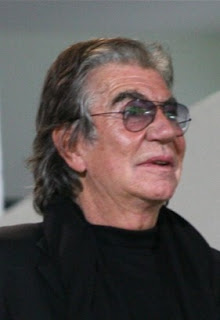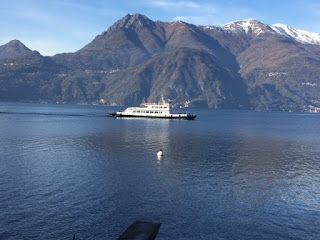Florentine who conceived the sand-blasted look for jeans
 |
| Roberto Cavalli |
The designer Roberto Cavalli was born on this day in 1940 in
Florence.
Cavalli has become well-known in high-end Italian fashion for
his exotic prints and for creating the sand-blasted look for jeans.
From an artistic family, Cavalli has a grandfather,
Giuseppe Rossi, who was a talented painter whose work is on show in the Uffizi
Gallery in Florence.
As a student, Cavalli attended an art institute where he
learnt about printing textiles and in the early 1970s he invented and patented
a printing process for leather and began creating patchworks of different
materials.
When he took samples of his work to Paris he received
commissions from such fashion houses as Hermes and Pierre Cardin.
At the age of 32, Cavalli presented the first collection in
his name in Paris and then showed it in Florence and Milan.
He opened his first boutique in Saint Tropez in 1972 and added
further boutiques in Italy and other parts of France.
 |
| Roberto Cavalli with his wife Eva Duringer pictured in Vienna in 2013 |
In 1994 he showed the first sand-blasted jeans in his
autumn/winter collection and then worked with Lycra to invent stretch jeans in
1995.
In 2001 he opened his first café store in Florence and this
was followed by the opening in Milan of the Just Cavalli café and another
boutique on the fashionable Via della Spiga.
His clothes, menswear, jewellery and perfumes now sell all
over the world.
Cavalli has two children from his first marriage and three
from his second marriage. He met his second wife, Eva Duringer, when he was a
judge at the 1977 Miss Universe contest, where she was representing Austria.
Leading female pop singers such as Christina Aguilera and
Jennifer Lopez have asked Cavalli to create costumes for them and he also
created the wardrobe worn by the Spice Girls on their reunion tour.
Catwalk stars such as Jessica Stam, Eva Riccobono and
Laetitia Casta are among the models who have helped promote his designs.
In 2011 he told Vogue Magazine that he was reluctant to
retire, saying ‘…fashion is a part of my DNA. I could never live without it.’
 |
| The Piazzale degli Uffizi Gallery in Florence |
Travel tip:
Work on the Uffizi began in 1560 in order to create
a suite of offices (uffici) for the new administration of Cosimo I. The
architect, Vasari, created a wall of windows on the upper storey and from about
1580, the Medici began to use this well-lit space to display their art
treasures, which was the start of one of the oldest and most famous art
galleries in the world. The present day Uffizi Gallery, in Piazzale degli
Uffizi, is open from 8.15 am to 6.50 pm from Tuesday to Sunday.
 |
| Chic Via della Spiga in Milan |
Travel tip:
The Via della Spiga, where Cavalli opened a boutique, is one
of Milan’s top shopping streets, forming the north-east boundary of the city’s
fashion quarter, of which Via Manzoni, Via Monte Napoleone and Corso Venezia
form the other borders. Details of the other shops in Via della Spiga can be
found at the Amici di Via della Spiga website.











